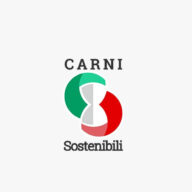
Regenerative agriculture and livestock farming
There is much talk about regenerative agriculture. But what is it, precisely? To deepen, this was the topic in Todi from last 16 to 19 September.
Producing healthy, sustainable food for the environment and access to the world’s growing population: this and many other challenges are facing the agri-food sector. Therefore, agriculture and livestock farming aim at a more efficient production system that counteracts climate change and perfectly integrates into nature’s biogenic cycles.
Today, for example, there is much talk about regenerative agriculture. It is a holistic approach that proposes cultivating the land with few external inputs but reusing the residues of previous production cycles to the maximum without over-exploiting, polluting and impoverishing it. Instead, regenerating it from time to time, preserving and improving the agricultural land and its ecosystem. Limited to a maximum up to the ban of chemical pesticides, synthetic fertilisers, and excessive tillage would cause soil degradation and loss of fertility. The cultivation must be minimal and carried out respecting the surrounding environment and the living beings.
Livestock farming is strongly integrated with this approach and fundamental to achieving this type of agriculture. Livestock farms are necessary for reducing fertilisers, thanks to the manure of animals that fertilise the land, without which the use of chemistry should be increased (and goodbye organic farming). The presence of animals is essential to restore the soil’s natural capacity to absorb CO2 emissions, protect biodiversity, the landscape, and the hydrogeological security of the territories, and combat desertification.
The principles on which regenerative agriculture is based concern the reduction of soil tillage, adopting less invasive techniques, diversification and crop rotation, the use of cover crops and the indispensable presence of livestock farming to restore fertility, obtain good yields and limit the use of synthetic pesticides.
The presence of grazing livestock, green manure and the “minimum or zero-tillage” are, for example, the necessary practices of regenerative agriculture to protect and improve the soil structure, help retain water, nutrients and organic matter, and contribute to the biological vitality of soils and their natural mineralisation. By reducing the tillage, we not only help to preserve the habitat and life of the organisms in the soil, such as earthworms but also drastically limit resource consumption, fuel, and emissions and, therefore, reduce the environmental impact.
The #RegenerativeAgriculture is an approach that proposes cultivating the #land with few external inputs but reusing the residues of previous production cycles to the maximum. Click To TweetAll are nice and shareable in theory, but you must deal with reality. And it is there that the combination of the regenerative approach with the much-criticised “intensive farming” model, which is based on the efficiency in the use of resources, can be useful for a truly sustainable agri-food system.
“Regenerative agriculture is based on the holistic concept that the whole world is connected and agroecosystems can restore their resources cyclically”, Professor Giuseppe Pulina, President of Carni Sostenibili (The Sustainable Meat Project) comments – “Among the interventions included, some are shared, such as agroforestry, the minimum tillage, the increase of organic matter in the soil, etc. Others instead follow less productive paths, such as organic farming and permaculture. The only useful intervention that could be related to this technology, apart from the minimum tillage that we have been teaching our students for 20 years and the rational use of animal manure that has always been practised in agriculture, is agroforestry, which has shown excellent results in Brazil in the construction of carbon neutral beef chains.
However, if economically feasible, regenerative farming practices could be certified, and particular sustainability chains could be built to produce feed raw materials.” The public is increasingly hungry for “natural” products, Pulina emphasises, “and this new word could find wide consensus. Adopting sustainable farming practices is still good because it tends to preserve the fertility of soils, the best land capital we have for the future. The expert concludes that an agronomic principle that dates back to the Romans says ‘the earth rests producing different things”.
The theme is very hot. Witness The Edible Planet Summit held in Todi, in the province of Perugia, from last 16 to 19 September: a global food meeting where 150 international experts discussed current issues and how to make today’s food system more sustainable. During this meeting, a document has been created that will outline the necessary steps to achieve the objectives of the 2030 Agenda concretely. Regenerative agriculture and livestock farming have been among the main topics addressed, along with the innovation of agricultural systems, circular food systems, policy renewal, alternative products, proper nutrition and health.





